
Buddleja, or Buddleia, commonly known as the butterfly bush, is a genus comprising over 140 species of flowering plants endemic to Asia, Africa, and the Americas. The generic name bestowed by Linnaeus posthumously honoured the Reverend Adam Buddle (1662–1715), an English botanist and rector, at the suggestion of Dr. William Houstoun. Houstoun sent the first plants to become known to science as buddleja to England from the Caribbean about 15 years after Buddle's death.

Euclea, from the Greek eukleia meaning "glory and fame", denotes a group of flowering plants in the Ebenaceae or ebony family. They were described as a genus by Linnaeus in 1774. The genus includes evergreen trees and shrubs, native to Africa, the Comoro Islands and Arabia. Several species are used for timber, producing a hard, dark heartwood timber similar to ebony.

The sebae anemone, also known as leathery sea anemone, long tentacle anemone or purple tip anemone, is a species of sea anemone belonging to the family Stichodactylidae and native to the Indo-Pacific area.

The African yellow bat is a species of bat in the family Vespertilionidae, the vesper bats. Other common names include African yellow house bat, yellow-bellied house bat, and Dingan's Bat. It is one of fifteen species in the genus Scotophilus.
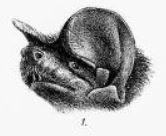
The African giant free-tailed bat, or African free-tailed bat is a species of bat in the family Molossidae. It is found in Democratic Republic of the Congo, Eritrea, Ethiopia, Kenya, Malawi, Mozambique, South Sudan, Tanzania, Zambia, Zimbabwe, and possibly South Africa. Its natural habitats are dry savanna and subtropical or tropical dry shrubland.
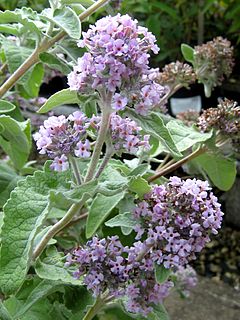
Buddleja crispa, sometimes called the Himalayan butterfly bush, is native to Afghanistan, Bhutan, North India, Nepal, Pakistan and China, where it grows on dry river beds, slopes with boulders, exposed cliffs, and in thickets, at elevations of 1400–4300 m. Named by Bentham in 1835, B. crispa was introduced to cultivation in 1850, and came to be considered one of the more attractive species within the genus; it ranked 8th out of 57 species and cultivars in a public poll organized by the Center for Applied Nursery Research (CANR) at the University of Georgia, USA.. In the UK, B. crispa was accorded the Royal Horticultural Society's Award of Merit in 1961. However, the species is not entirely cold-hardy, and thus its popularity is not as ubiquitous as it might otherwise be.
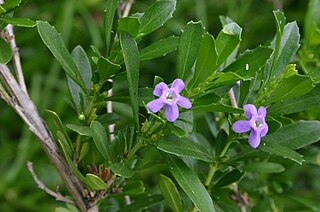
Freylinia tropica is a Southern African shrub with lax, spreading branches and found in the South African province of Limpopo and in Zimbabwe.

Zophodia grossulariella is a species of moth of the family Pyralidae. It is found in Europe and North America.
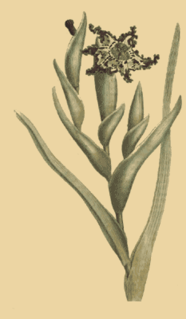
{{taxobox |name =Ferraria |image =Ferraria undulata.png |image_caption =Ferraria crispa |regnum =Plantae |unranked_divisio =Angiosperms |unranked_classis =Monocots |ordo =Asparagales |familia =Iridaceae |subfamilia =Iridoideae |tribus =Irideae |genus =Ferraria |species =F. crispa |binomial=Ferraria crispa |binomial_authority=Burm. }}

Turris crispa is a species of sea snail, a marine gastropod mollusk in the family Turridae, the turrids.
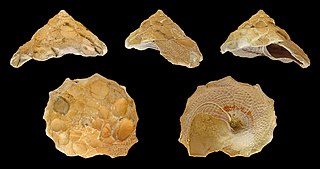
Xenophora crispa, the Mediterranean Carrier Shell, is a species of large sea snail, a marine gastropod mollusk in the family Xenophoridae, the carrier shells.
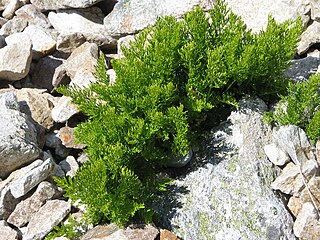
Cryptogramma crispa, the parsley fern, is an Arctic–alpine species of fern. It produces separate sterile and fertile fronds, up to 30 cm (12 in) tall, and is a pioneer species on acidic screes.
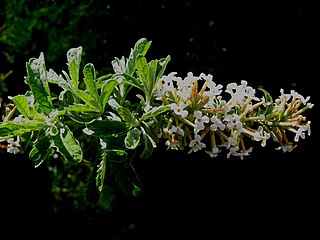
Buddleja × wardii is a naturally occurring hybrid of Buddleja alternifolia and Buddleja crispa discovered and collected by Frank Kingdon-Ward in 1924 from the mountain riverbanks of south-eastern Xizang at altitudes of 3000–3600 m; B. alternifolia and B. crispa are the only other Buddleja species found in the area. The shrub was named for Ward by Cecil Marquand in 1929. White-flowering plants under this name were collected in Tibet by Keith Rushforth and introduced to commerce in the UK in 2013.

Tarache tetragona, the four-spotted bird dropping moth, is a moth of the Noctuidae family. It is found from southern Florida south through the Caribbean and from eastern Texas south through Mexico and most of Central America to Costa Rica.

Euclea crispa, commonly known as the blue guarri, is an Afrotropical plant species of the family Ebenaceae. The hardy and evergreen plants may form a dense stand of shrubs, or grow to tree size. It is widespread and common in the interior regions of southern Africa, and occurs northward to the tropics. Though some are present near the South African south and east coasts, they generally occur at middle to high altitudes. It is readily recognizable from its much-branched structure and dull bluish foliage colour. Those bearing lanceolate leaves may however resemble the Wild olive, another common species of the interior plateaus.
Acanthesthes is a genus of longhorn beetles of the subfamily Lamiinae, containing the following species:

Oulophyllia crispa, sometimes called the intermediate valley coral, is a species of stony coral in the family Merulinidae. It is native to the tropical western and central Indo-Pacific region. Although this coral has a wide range, it is generally uncommon and seems to be decreasing in abundance, and the International Union for Conservation of Nature has rated its conservation status as being "near threatened".

Perilla is a genus consisting of one major Asiatic crop species Perilla frutescens and a few wild species in nature belonging to the mint family, Lamiaceae. The genus encompasses several distinct varieties of Asian herb, seed, and vegetable crop, including P. frutescens (deulkkae) and P. frutescens var. crispa (shiso). The genus name Perilla is also a frequently employed common name ("perilla"), applicable to all varieties. Perilla varieties are cross-fertile and intra-specific hybridization occurs naturally. Some varieties are considered invasive.
Acanthesthes amycteroides is a species of beetle in the family Cerambycidae. It was described by White in 1858. It is known from South Africa.



















